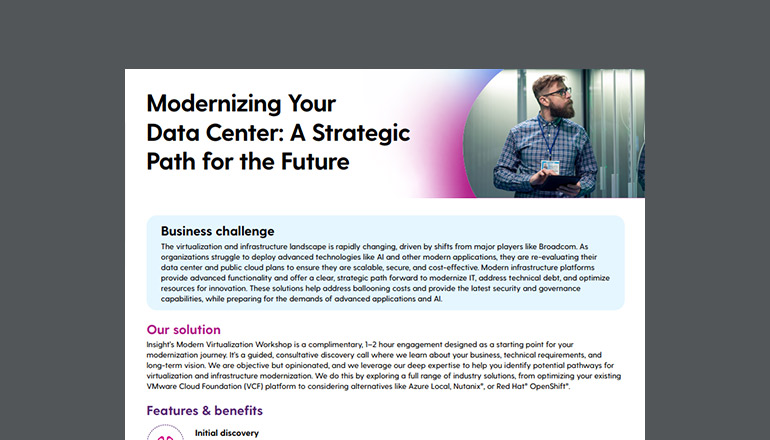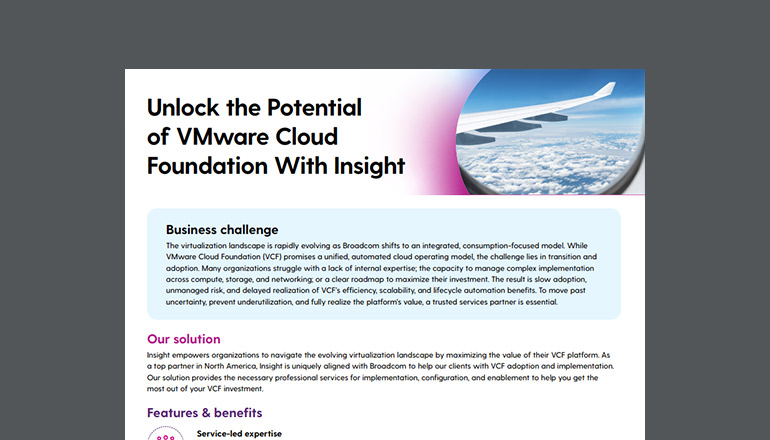Article Reduce Data Storage Costs
Data can be a competitive advantage for modern businesses that turn information into insights.
By / 26 Oct 2017 / Topics: Backup & recovery Data center Storage

Projections for the volume of stored data are growing exponentially — and could mean greater costs and added complexity if data is not handled strategically. In addition, companies must invest in data recovery and restore operations in case of data loss.
Your IT may be at a pivotal juncture for a digital transformation as you try to solve the data dilemma. There are many considerations to keep in mind when setting out to find the best data storage and recovery solution to fit your business needs.
Storage wars: Where the real challenges occur
If you’ve ever moved into a new home or cleaned out a packed garage, then you already understand the potential challenges with storage: Data can accumulate quickly, storage needs fluctuate, maintaining stored items takes time and resources, items stored off-site take longer to get to, and there’s always a risk of things getting lost, stolen or damaged.
The top two greatest challenges for companies in 2016 were managing their large data (49%) and maintaining data performance (46%), according to a survey by storage company Tintri, as shown in Figure 1. These concerns were closely followed by scalability (42%), capital expenses (41%) and operating expenses (32%).

Data is primarily stored in three environments: virtual, physical and cloud. For most companies, information storage (whether digital or hard copy) is fragmented across virtual and physical infrastructures. While application and data storage across different environments is logical for each use case, fragmented storage among multiple providers is a quick way to drive up costs.
Think about your own life: If you have physical items stored in an off-site storage unit in addition to digital information stored in a cloud service, you’re paying two vendors for two different types of storage services. You might also have a boat docked at a third facility, or a backup service in addition to your cloud storage. The vendor contracts continue to pile up, creating more policies to know, keys and passwords to remember and, ultimately, storage costs and complexity.
Fragmented storage complicates asset management, placing added administrative strain on workers. Many companies are also guilty of overprotecting or saving too much information. They store excessive volumes of data for the sake of having it. (You might experience this if you have a number of items in your closet you’re holding on to just in case they come back in style.)
To avoid paying for more storage than what’s truly needed, organizations need a healthy sense of the value of their data, plus defined data lifecycle policies. Not all data is the same. It’s important to evaluate your data to understand what is an asset or liability and what has no value or risk if it’s lost.
Smart backup and recovery
Storage can be money down the drain if you don’t also have a plan for backups and data recovery. Protecting your business with backups is a no-brainer, but executing backups efficiently can be challenging — especially when applications and data are fanned out across various environments or vendors. You run the risk of omitting some data and leaving it unprotected. Another hazard of fragmented storage is that access to timely backups is not guaranteed, putting the business at risk in case of an emergency.
Just as you need to assess the value of stored data, you should give thoughtful consideration to backups. Different backup methods should be applied to data sets according to change rates and recovery needs. Establish data lifecycles so you can confidently destroy data your organization no longer needs and save storage space.
Ensuring you protect the right data and execute backups at appropriate intervals can be difficult and time-consuming — but very valuable. Effective backup also entails reliable recovery plans.
Consolidated storage and backup solutions such as Veritas Unified Data Protection eliminate these challenges. Veritas delivers automated lifecycle management and protects your data and applications across different environments — from on-premise data centers to remote branch offices and the cloud.
Veritas Backup Exec is a unified data backup solution for all data and applications across virtual and physical environments. It provides seamless cloud integration for fast, reliable backup and recovery. The administrative console gives you complete visibility into your data and lets you easily create, track and monitor backup jobs. Plus, automated backups reduce the time and resources needed to manage backup operations.
Backup Exec also helps control data volume with integrated change block tracking and advanced data deduplication that checks for duplications across your entire storage infrastructure.
When it comes to protecting your data — and essentially your business — it’s important to invest in a solution that solves more problems than it creates. A unified storage solution will help you reduce strain on IT teams, lower costs and provide the access and recovery you need. It’s a smart data management solution that gives you room to grow.






